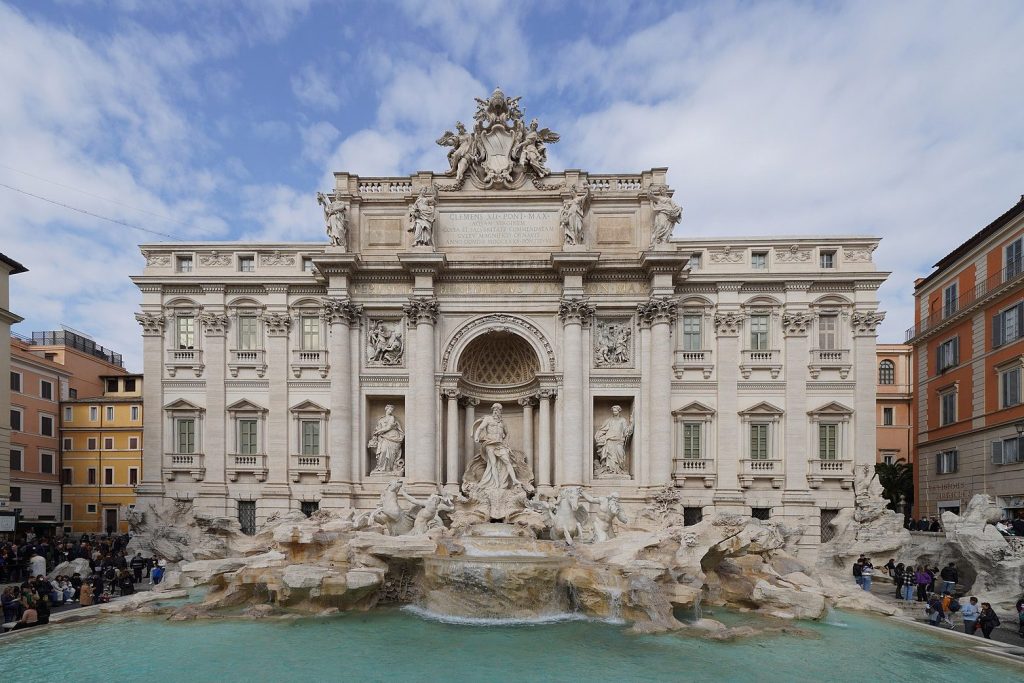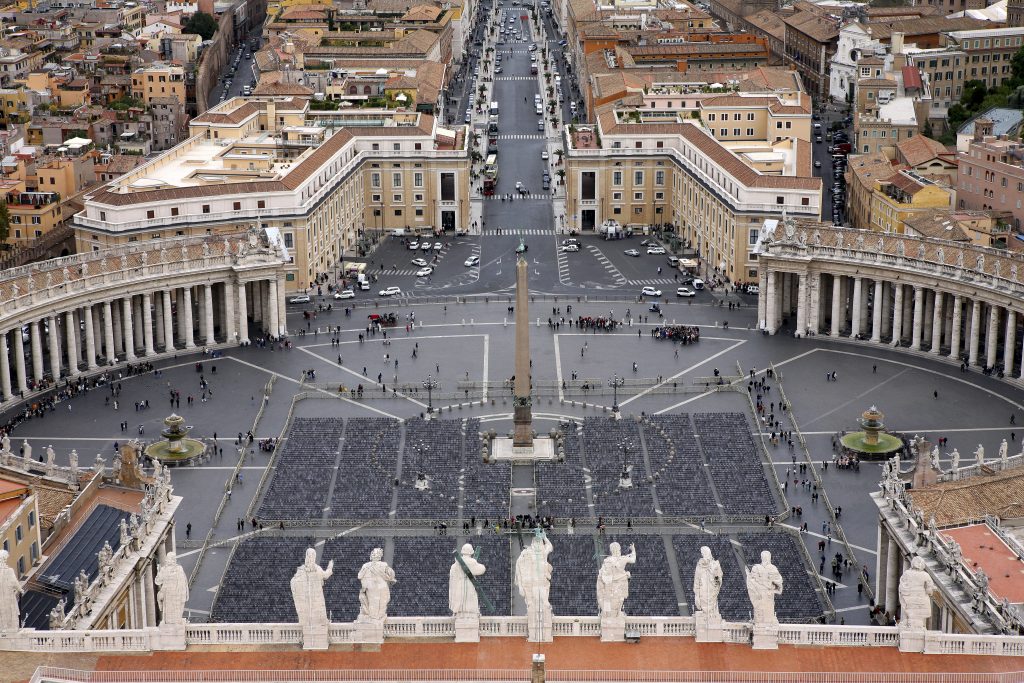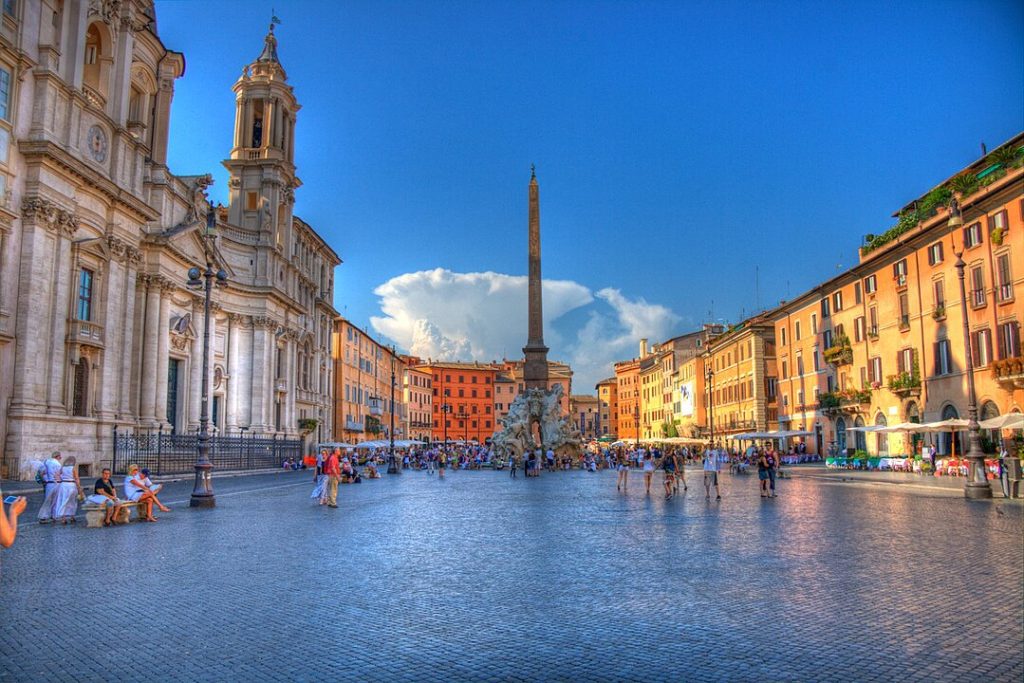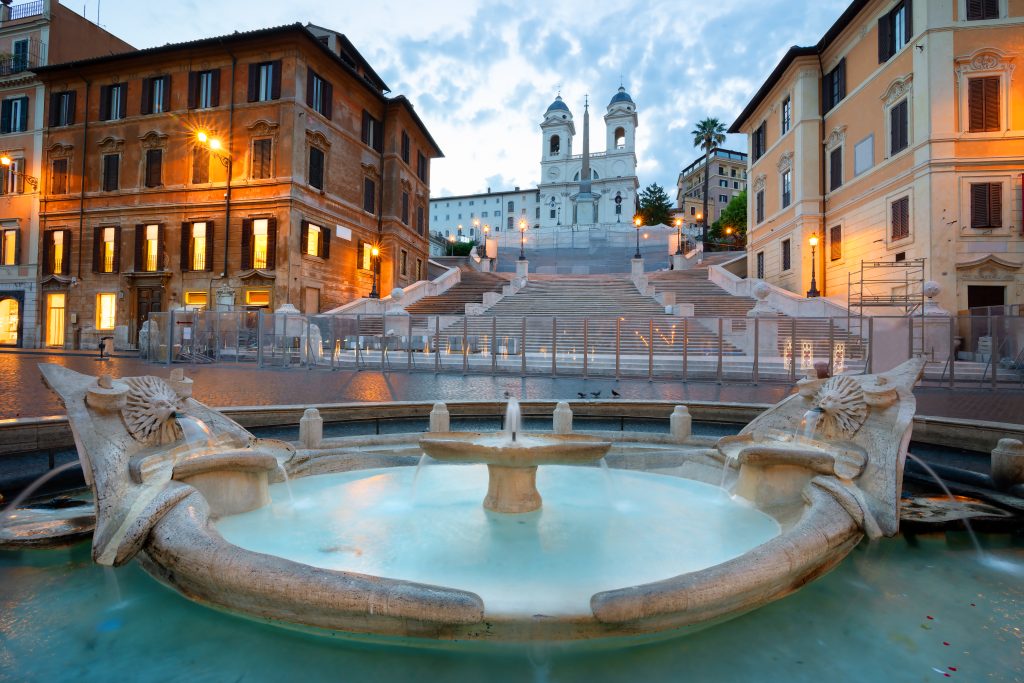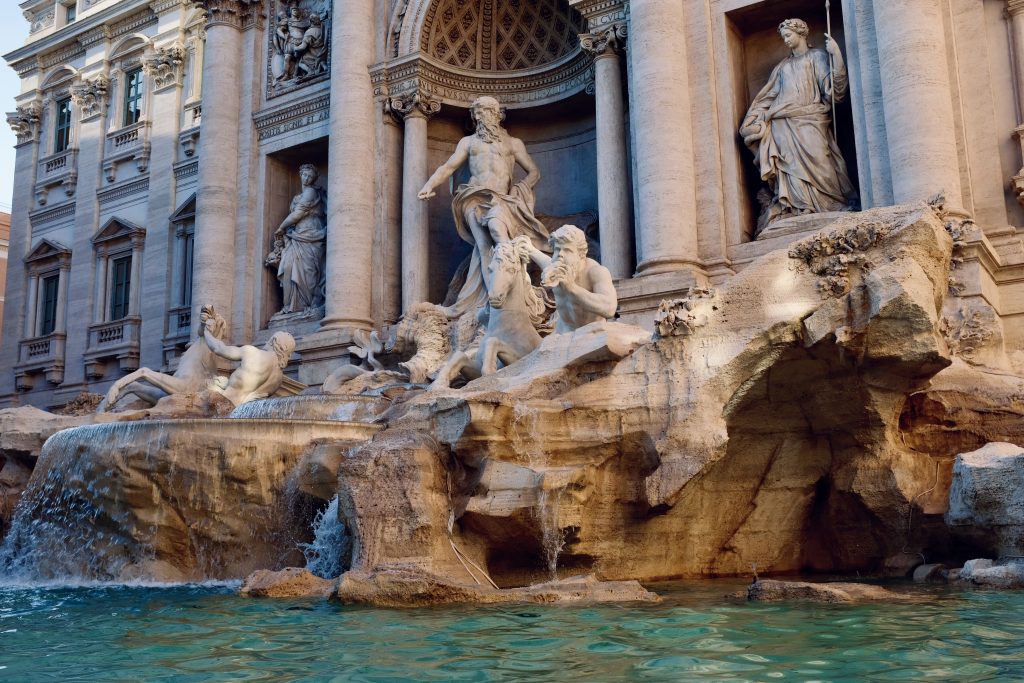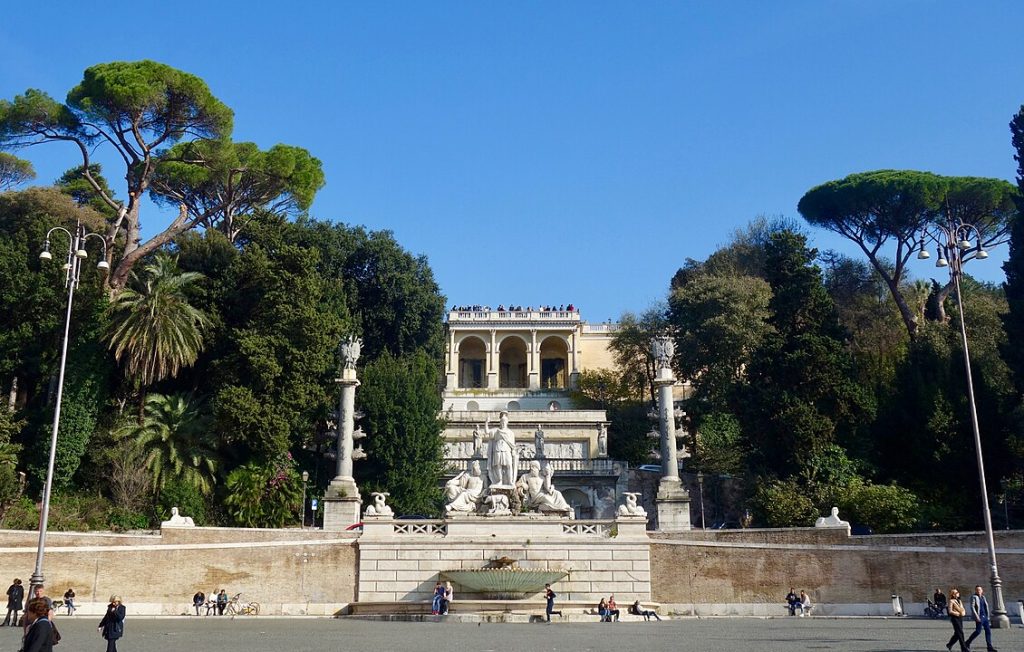- Day 1 - Ancient Rome and the city center
- 1️⃣ Colosseum - a symbol of the power of ancient Rome
- 2️⃣ Roman Forum - the heart of ancient Rome
- 3️⃣ Palatine - the hill of emperors and the birth of Rome
- 4️⃣ Venetian Square - the monumental heart of modern Rome
- 5️⃣ Capitoline Hill - the hill of the gods and the heart of Rome
- 6️⃣ Trevi Fountain - Rome's most beautiful fountain
- 7️⃣ Pantheon - the best preserved temple of ancient Rome
- 8️⃣ Piazza Navona - Rome's Baroque landmark
- 9️⃣ Trastevere - a charming neighborhood on the other side of the Tiber River
- Day 2 - Vatican City and Baroque Rome
- 1️⃣ St. Peter's Basilica - the spiritual heart of the Vatican
- 2️⃣ Vatican Museums and Sistine Chapel - a treasure trove of world art
- 3️⃣ Castle of St. Angelo - fortress, palace and secret passages
- 4️⃣ Spanish Square - the elegance and heart of fashion in Rome
- 5️⃣ Spanish Steps - the most famous staircase in Rome
- 6️⃣ Campo de' Fiori - a square full of life and meetings
- 🛎️ Practical tips
- Summary
- 🔗 Articles similar in subject matter
- 🔥 Most popular articles in the last week
- 💬 Opinions
Rome is a city where history and everyday life meet at every turn. Walking through its streets, you can at a glance admire the majestic ruins of an ancient empire, to sit by the fountain a moment later and savor the aromatic italian espresso.
Two days in the Eternal City may not be enough to discover all its secrets, but Enough to feel its magic And see places that remain in the memory forever.
We have prepared for you Rome sightseeing plan in 2 days, which will allow you to:
- cross heart of the ancient city,
- toss a coin into Trevi Fountains,
- thrill Pantheon and Piazza Navona,
- and the next day discover treasures of the Vatican and stand on the terrace of St. Peter's Basilica, offering a view of the entire city.
It's going to be a short but intense trip. Full of impressions, tastes and sights that will stay with you for a long time.
Day 1 - Ancient Rome and the city center
1️⃣ Colosseum - a symbol of the power of ancient Rome
The Colosseum - 10 fascinating facts about the symbol of Rome
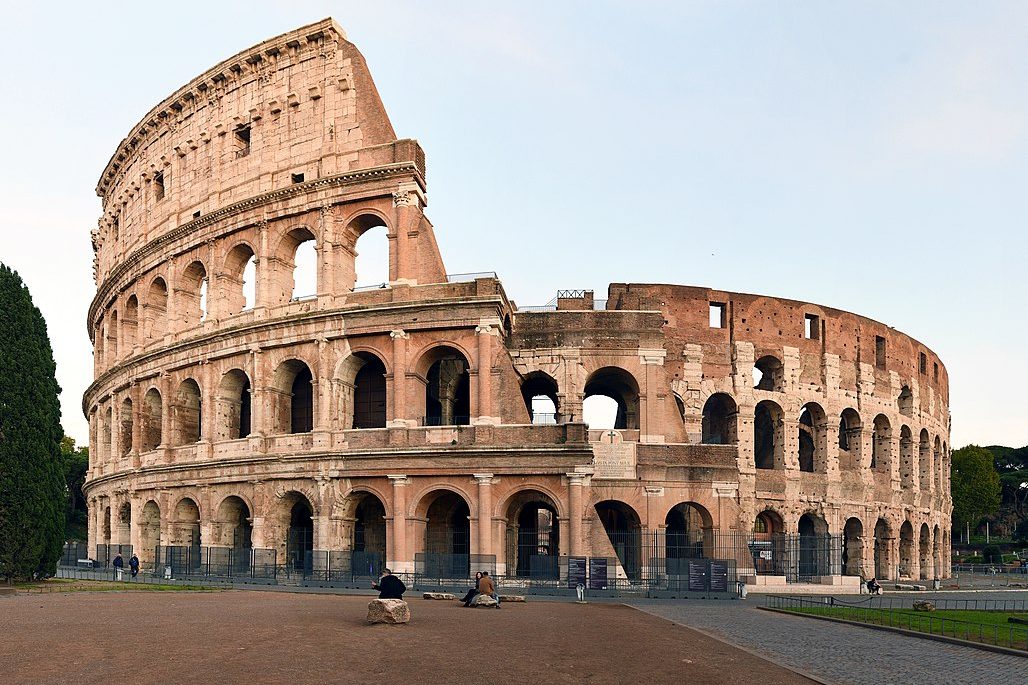
The most recognizable building in the Eternal City and a must-see on any visit to Rome. Erected in the 1st century AD by order of Emperor Vespasian, it was the largest amphitheater in the world, accommodating up to 50,000 spectators. It was here that spectacular gladiatorial fights, battle re-enactments and shows were held to entertain the Roman people. Today the Colosseum is one of the new Seven Wonders of the World and a remarkable testament to the engineering genius of the ancients.
During the visit:
🔹 enter the gladiator arena and feel the atmosphere of ancient struggles,
🔹 Visit the underground where animals were kept and gladiators were prepared,
🔹 climb to the upper floors for a panoramic view of the Roman Forum,
🔹 Use the audio guide or app to better understand the history of the place.
📍 Access: Colosseo metro station (line B) - the exit leads almost directly under the amphitheater
🕐 Tour time: about 1.5-2 hours. Best to book online and come in the morning to avoid the biggest crowds.
2️⃣ Roman Forum - the heart of ancient Rome
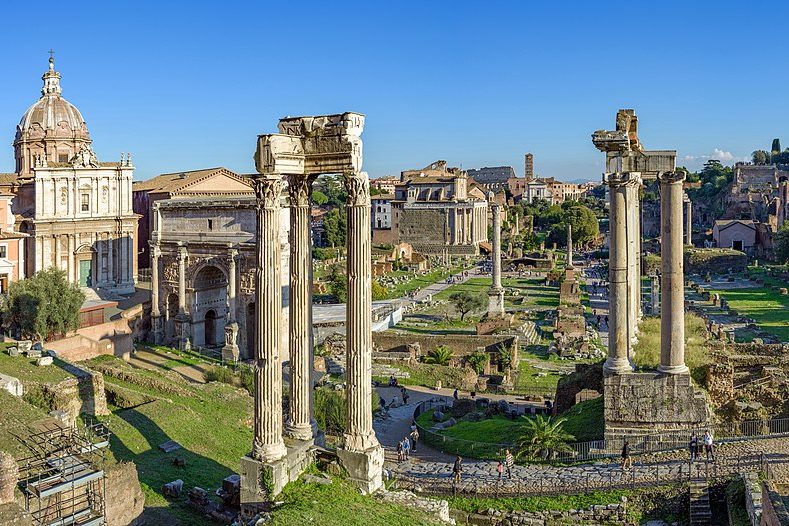
It was here that the political, religious and social heart of the ancient empire beat. The Roman Forum was the main square of the city, surrounded by temples, basilicas and public buildings. Walking among the ruins today, one can imagine life two thousand years ago - senators addressing crowds, priests offering sacrifices and citizens who came here to run daily errands.
During the visit:
🔹 See the Arch of Titus, commemorating the victory over Jerusalem,
🔹 walk past the Temple of Saturn - one of the oldest buildings of the Forum,
🔹 Visit the Basilica of Maxentius and Constantine, impressive in its enormity,
🔹 Stop at Via Sacra - the main street that victorious leaders marched down.
📍 Access: Colosseo metro station (line B), the entrance is next to the Colosseum
🕐 Tour time: about 1.5 hours. It is advisable to combine the tour with the Colosseum and the Palatine, using one ticket.
3️⃣ Palatine - the hill of emperors and the birth of Rome
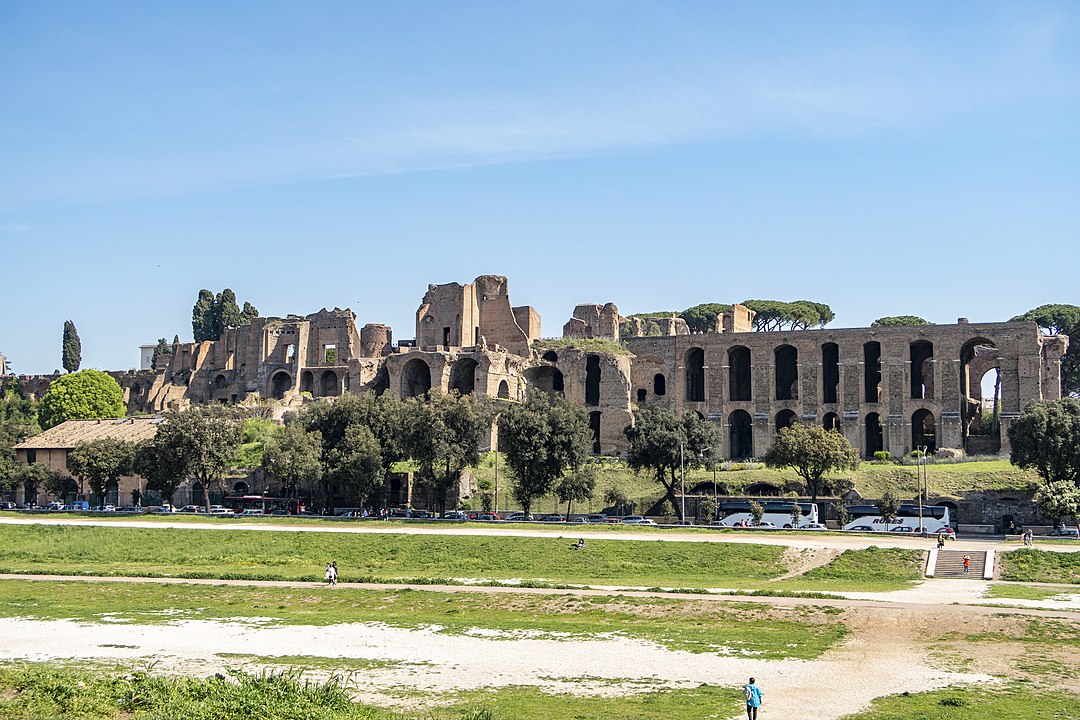
One of the seven hills of Rome, which, according to legend, was the place where Romulus and Remus were found by a she-wolf. It was here that Romulus is said to have founded Rome in 753 BC. Over time, the Palatine became a prestigious district of imperial residences - monumental palaces, gardens and terraces testify to the former splendor. Walking through the ruins, you can feel the atmosphere of the ancient power and enjoy beautiful views of the Roman Forum and the Colosseum.
During the visit:
🔹 see the ruins of Domus Augustana, the private residence of Emperor Augustus,
🔹 Walk through the Farnese gardens, full of greenery and viewpoints,
🔹 Stop by the Domus Flavia - the palace where the emperor received guests,
🔹 Enjoy the panorama of the Roman Forum from the observation decks.
📍 Access: Colosseo metro station (line B), entrance shared with the Colosseum and the Roman Forum
🕐 Tour time: about 1-1.5 hours. Best to visit together with the Forum and Colosseum in one ticket.
4️⃣ Venetian Square - the monumental heart of modern Rome
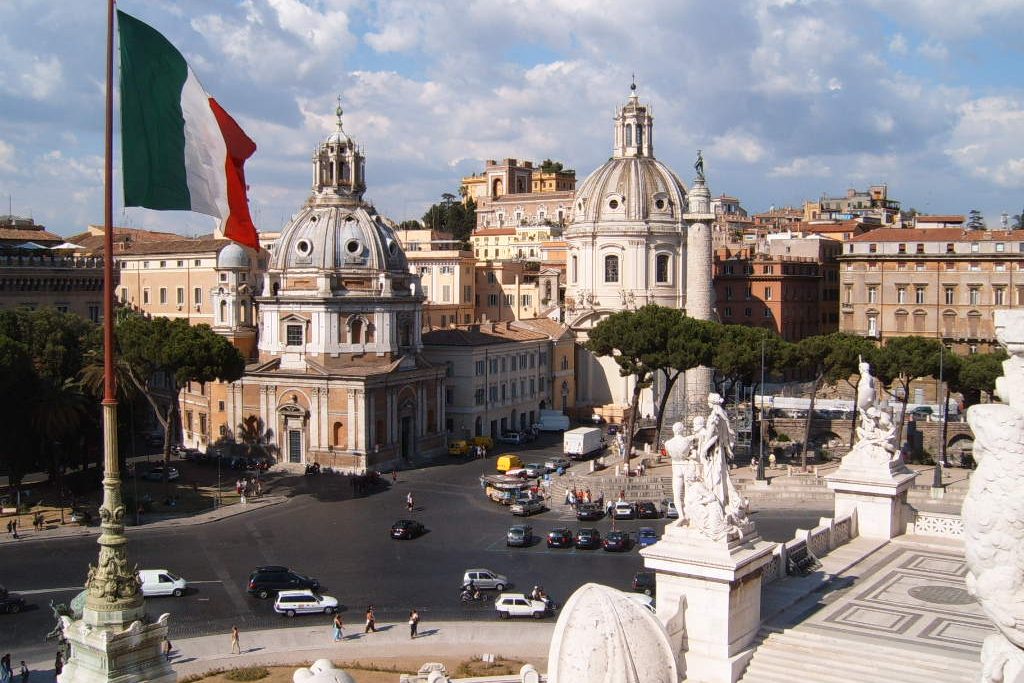
One of the most characteristic squares in Rome, where the main streets of the city intersect. It is dominated by the imposing Altar of the Fatherland (Altare della Patria) - a monumental white edifice built in honor of King Victor Emmanuel II, the founder of a united Italy. Although the building is controversial due to its monumental form, it is hard to pass by it indifferently. The terraces offer a great view of the Roman Forum and the Capitoline Hill.
During the visit:
🔹 climb the observation decks and enjoy the panoramic view of Rome's center,
🔹 See the Tomb of the Unknown Soldier, guarded by sentries,
🔹 Go to the Venetian Palace, the Renaissance seat of the former popes,
🔹 Note the sculptures, columns and stairs adorning the Altar of the Fatherland.
📍 Access: buses stop at Piazza Venezia, walking from the Colosseum takes about 10 minutes.
🕐 Tour time: about 30-45 minutes. It is worth to go to the panoramic terrace (additional ticket).
5️⃣ Capitoline Hill - the hill of the gods and the heart of Rome
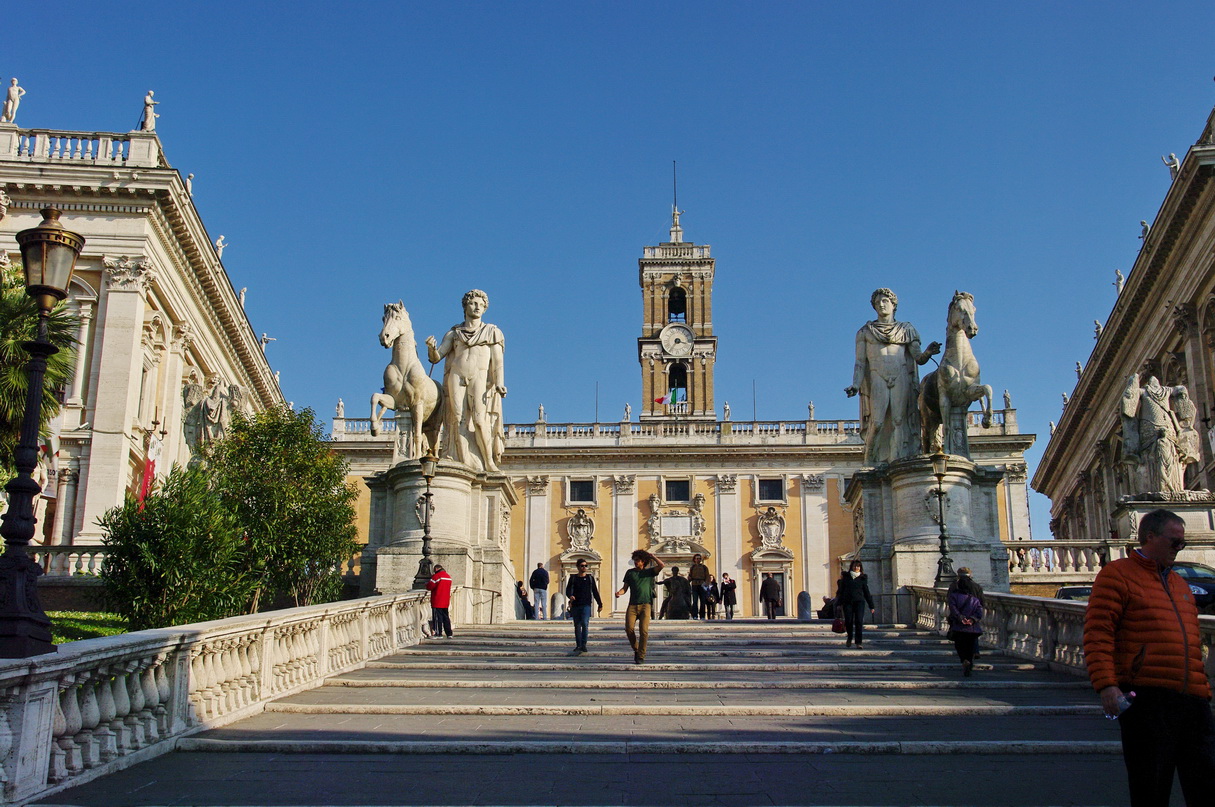
The smallest of Rome's seven hills, but for centuries it was of great political and religious importance. It was here that the most important temples of the ancient city were located, and later the site was transformed into an administrative center. In the 16th century Michelangelo designed a new layout of the square with a distinctive star on the floor and harmonious buildings, which we still admire today. The Capitoline Hill offers one of the most beautiful views of the Roman Forum.
During the visit:
🔹 stop at Piazza del Campidoglio - The square designed by Michelangelo,
🔹 see a copy of the famous horse statue of Marcus Aurelius,
🔹 visit Capitoline Museums, where there are, among other things, the Capitoline Wolf and Roman artworks,
🔹 Walk up to the viewpoint and look at the Roman Forum ruins from above.
📍 Access: walk from Piazza Venezia (about 5 minutes uphill), nearest metro station - Colosseo (line B).
🕐 Tour time: 1-1.5 hours. Capitoline Museums is a good idea if you have more time.
6️⃣ Trevi Fountain - Rome's most beautiful fountain
Trevi Fountain in Rome - this attraction you must see
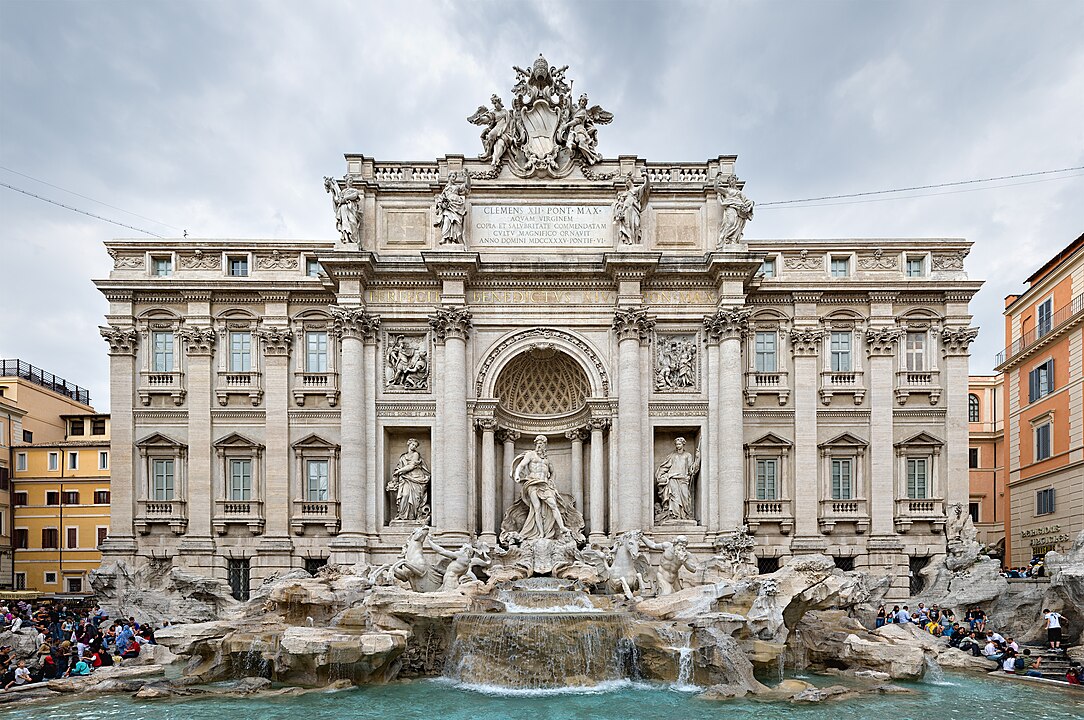
It is a true icon of the Eternal City and one of the most romantic places in Rome. The monumental fountain, completed in the 18th century to a design by Niccolò Salvi, impresses with the richness of its sculptures and the grandeur of its Baroque composition. The central figure is Neptune on a chariot, surrounded by tritons and allegorical figures. Tradition says that throwing a coin into the fountain guarantees a return to Rome - so every day thousands of tourists make their wishes here.
During the visit:
🔹 Throw a coin over your left shoulder to ensure your return to the Eternal City,
🔹 Admire the fountain both during the day and in the evening when it is beautifully illuminated,
🔹 find a moment to sit on the steps and feel the atmosphere of the place,
🔹 Pay attention to the details of sculptures depicting the riches of nature and water.
📍 Access: the nearest metro station Barberini (line A), then about 10 minutes on foot
🕐 Tour time: 20-30 minutes. Best to come in the morning or late evening to avoid crowds.
7️⃣ Pantheon - the best preserved temple of ancient Rome
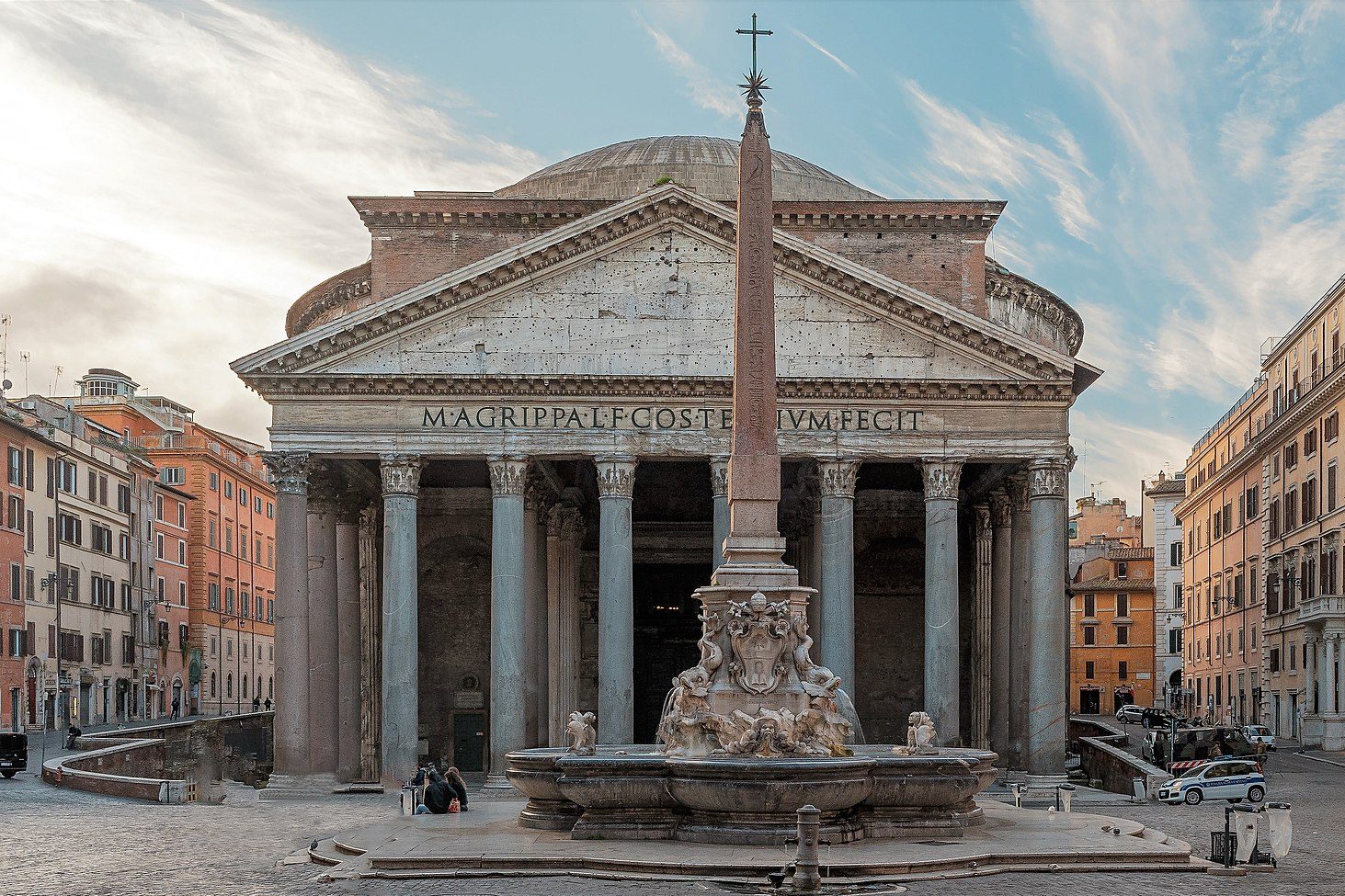
One of the most remarkable sites in Rome, which has survived almost two thousand years almost intact. Erected in the second century AD during the reign of Emperor Hadrian, it was the temple of "all the gods." It still impresses today with its huge dome with a characteristic opening in the center - the oculus, through which natural light enters. The interior of the Pantheon also hides the tombs of important figures, including Raphael and King Victor Emmanuel II. It is a perfect combination of simplicity, harmony and the genius of Roman architecture.
During the visit:
🔹 look up the dome - To this day, it remains the largest in the world made of concrete without reinforcement,
🔹 stop by oculus - The light coming in from the sky, which creates a magical atmosphere,
🔹 see the tomb of the famous artist Raphael,
🔹 Note the marble floors and columns imported from ancient Egypt.
📍 Access: nearest metro station Barberini (line A), then a 15-minute walk; also easy to walk from Piazza Navona
🕐 Tour time: 30-45 minutes. Admission is free (although nominal fees have been introduced on selected days).
8️⃣ Piazza Navona - Rome's Baroque landmark
Piazza Navona - the most beautiful square in Rome
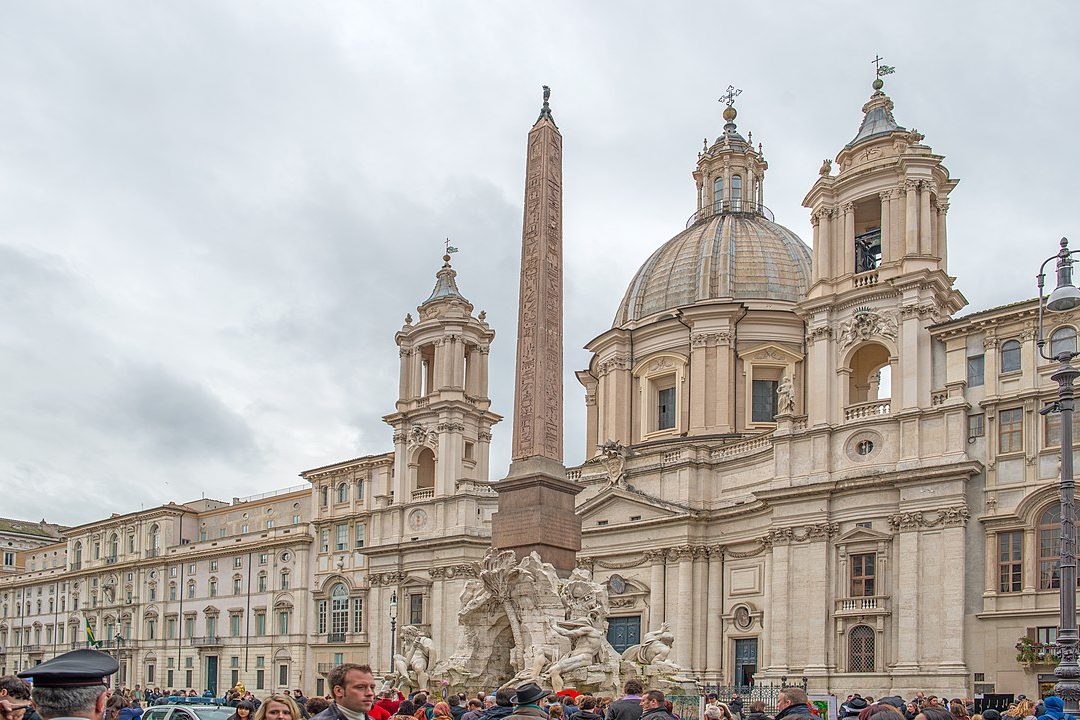
One of the most beautiful and vibrant squares in Rome. It was built on the site of the former stadium of Domitian, as evidenced by its distinctive oblong shape. Today Piazza Navona impresses with its Baroque architecture and Bernini's famous fountains. It's the perfect place to take a stroll, relax for a while in a cafe or watch the street artists. In the evening, the square takes on a unique atmosphere - illuminated fountains and the bustle of restaurants create a magical atmosphere.
During the visit:
🔹 admire Fountain of the Four Rivers by Bernini - a masterpiece of Baroque sculpture,
🔹 stop by St. Agnes Church in Agona Borromini's design,
🔹 Stroll around the square and see two other fountains - Neptune and Maura,
🔹 Sit in one of the cafes and feel the atmosphere of the Italian dolce vita.
📍 Access: no subway in the immediate area; best to walk from the Pantheon (about 5 minutes) or Campo de' Fiori
🕐 Tour time: 30-60 minutes. Best to visit in the late afternoon or evening.
9️⃣ Trastevere - a charming neighborhood on the other side of the Tiber River
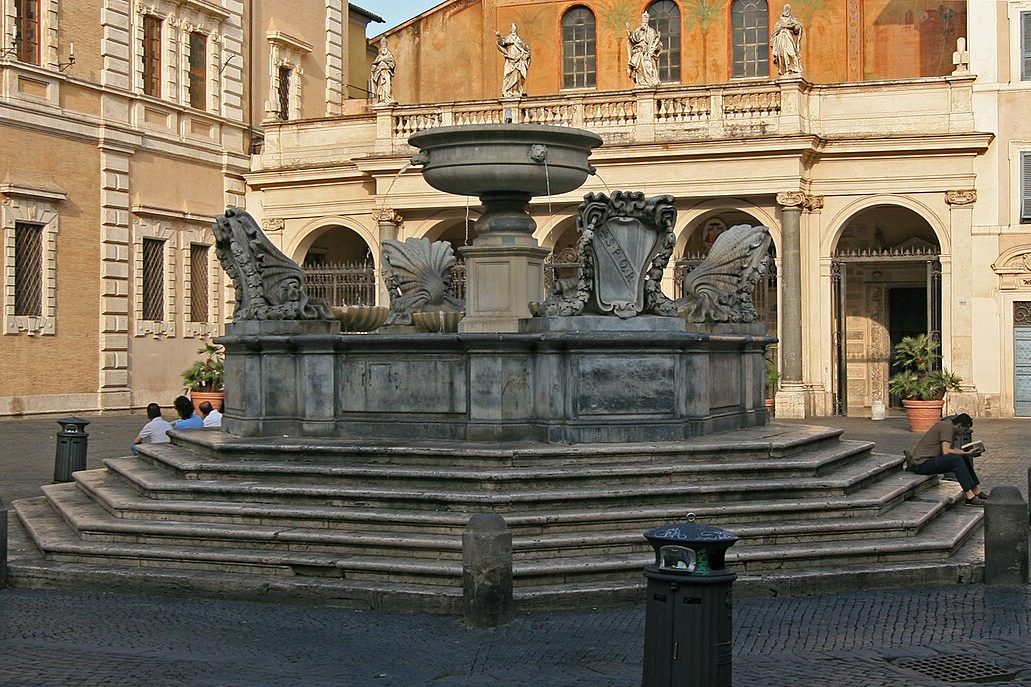
One of the most atmospheric places in Rome, which impresses with narrow cobbled streets, colorful townhouses and the atmosphere of real Italian life. Trastevere is the perfect place for an evening stroll and dinner - it is full of trattorias, wine bars and small pubs serving local specialties. During the day the district is quiet, but in the evening it turns into a lively meeting center.
During the visit:
🔹 Stroll the narrow streets and discover the less touristy face of Rome,
🔹 visit Basilica of Santa Maria in Trastevere - One of the oldest in the city, with beautiful mosaics,
🔹 Sit down in a traditional trattoria and try a classic carbonara or cacio e pepe,
🔹 In the evening, feel the atmosphere of the Italian dolce vita in Piazza di Santa Maria.
📍 Access: streetcar 8 from Piazza Venezia or walk across the bridges over the Tiber River
🕐 Tour time: 1-2 hours. It is best to visit in the evening to feel the real atmosphere of the district.
Day 2 - Vatican City and Baroque Rome
1️⃣ St. Peter's Basilica - the spiritual heart of the Vatican
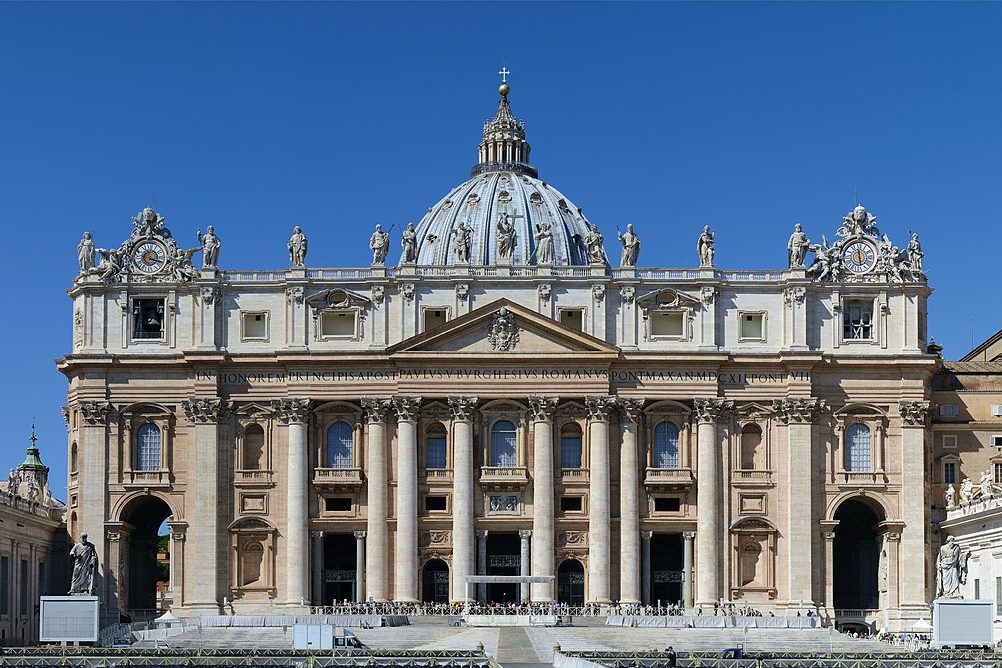
The largest temple of Christianity and one of the most impressive works of architecture in the world. Built on the site of St. Peter's tomb, it impresses with a monumental dome designed by Michelangelo, an interior full of works of art and an extraordinary atmosphere. Every detail of the basilica - from Bernini's canopy to Michelangelo's Pieta - is impressive. It's also worth climbing to the dome for an unforgettable panorama of Rome and St. Peter's Square.
During the visit:
🔹 see the famous Pieta by Michelangelo, a masterpiece of Renaissance sculpture,
🔹 Approach the tomb of St. Peter and the popes in the basilica's crypts,
🔹 climb the dome (320 stairs or elevator + 230 stairs) and enjoy the view of the entire city,
🔹 Take a look at Bernini's monumental canopy over the main altar.
📍 Access: metro line A - Ottaviano station, then about 10 minutes on foot
🕐 Tour time: 1.5-2 hours. Admission to the basilica is free, entrance to the dome is paid. It is best to come early in the morning to avoid queues.
2️⃣ Vatican Museums and Sistine Chapel - a treasure trove of world art
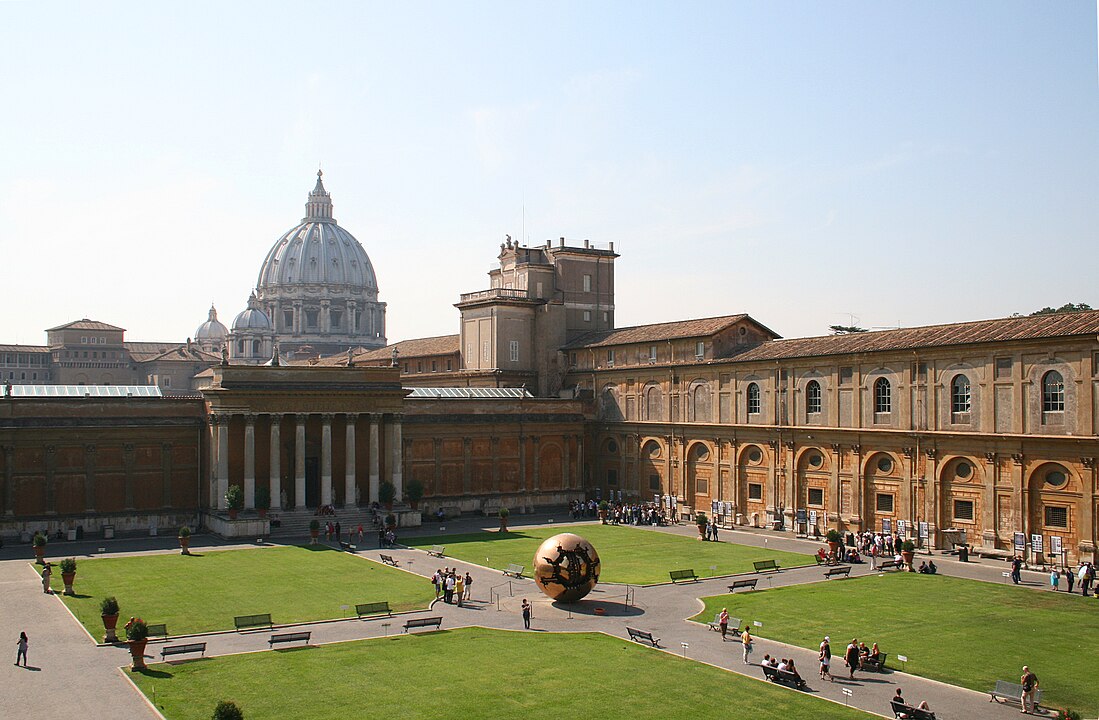
One of the richest art collections in the world, stretching over 7 kilometers of corridors and halls. The Vatican Museums hide masterpieces ranging from ancient Egyptian, Greek and Roman art to Renaissance and Baroque. The most famous sightseeing spot is, of course, the Sistine Chapel, where you can admire Michelangelo's frescoes, including the monumental "Creation of Adam" and "Last Judgment." It's a place where art and spirituality meet in a unique way.
During the visit:
🔹 see Map Gallery - A delightful hallway decorated with painted maps of Italy,
🔹 stop in Vatican Pinacoteca With works by Raphael, Caravaggio and Da Vinci, among others,
🔹 visit Belvedere Courtyard With a statue of Apollo and the famous Laocoon,
🔹 take the time to The Sistine Chapel - The heart of museums and one of the most important works of art in history.
📍 Access: metro line A - Ottaviano or Cipro station, then a few minutes on foot
🕐 Tour time: min. 2-3 hours. It is necessary to book tickets online in advance. It is advisable to plan to enter in the morning to avoid the biggest crowds.
3️⃣ Castle of St. Angelo - fortress, palace and secret passages
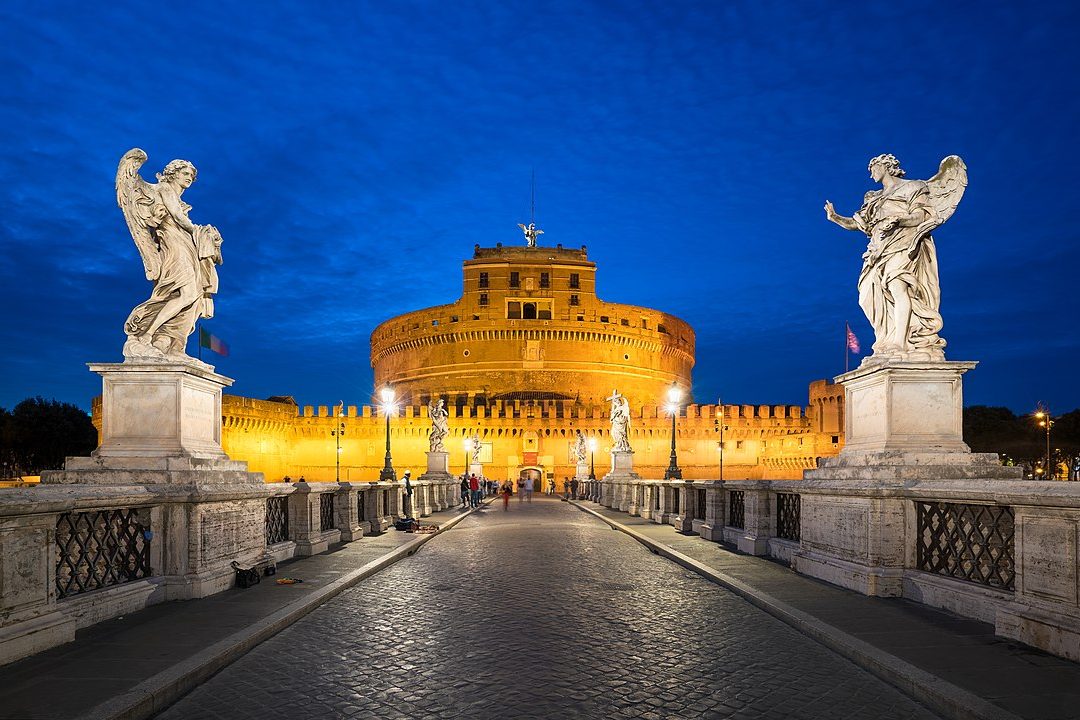
The impressive structure on the Tiber River was originally built as the mausoleum of Emperor Hadrian in the 2nd century AD. Over the centuries it served various functions - it was a tomb, a fortress, a papal residence and even a prison. Today, the Castle of St. Angelo impresses not only with its history, but also with the view from the terrace, which offers a panorama of the Bridge of Angels, the Tiber River and the Vatican. It's a place shrouded in legends and full of mysteries, related, among other things, to the papal escape corridor leading all the way to the Vatican.
During the visit:
🔹 climb to the observation deck and see one of the most beautiful panoramas of Rome,
🔹 Walk through the richly decorated papal chambers,
🔹 Learn about the history of the mausoleum and its transformation into a fortress,
🔹 pay attention to St. Angelo Bridge, decorated with Baroque sculptures by Bernini.
📍 Access: metro line A - Ottaviano station, further about 15 minutes on foot or buses that stop at Lungotevere
🕐 Tour time: 1-1.5 hours. Best visited in the afternoon to combine the visit with a walk along the Tiber River.
4️⃣ Spanish Square - the elegance and heart of fashion in Rome
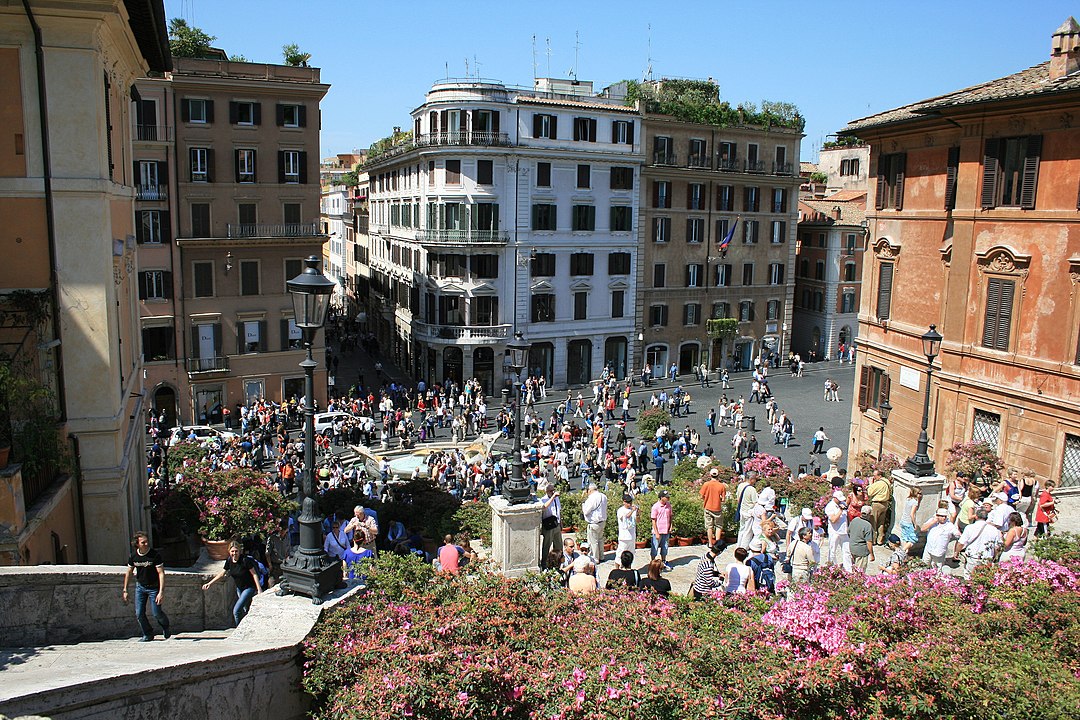
One of the most famous squares in Rome, which has attracted tourists, artists and locals for centuries. It is famous for its majestic Spanish Steps, leading to the church of Trinità dei Monti, and from the baroque Fountains della Barcaccia, designed by Bernini. The square is surrounded by elegant boutiques and cafes, and its atmosphere combines luxury with casual gatherings. It's the perfect place to feel the pulse of the city and take a break from sightseeing.
During the visit:
🔹 sit on Spanish Steps And observe the bustling city,
🔹 see Fountain della Barcaccia In the shape of a boat,
🔹 enter the church Trinità dei Monti, which offers a beautiful view of the square,
🔹 Stroll down the famous street Via Condotti, full of luxury stores and elegant storefronts.
📍 Access: metro line A - Spagna station, exit leads directly to the square
🕐 Tour time: 30-45 minutes. It is best to visit in the afternoon or evening when the square is beautifully lit.
5️⃣ Spanish Steps - the most famous staircase in Rome
The Spanish Steps in Rome - an icon of the Eternal City
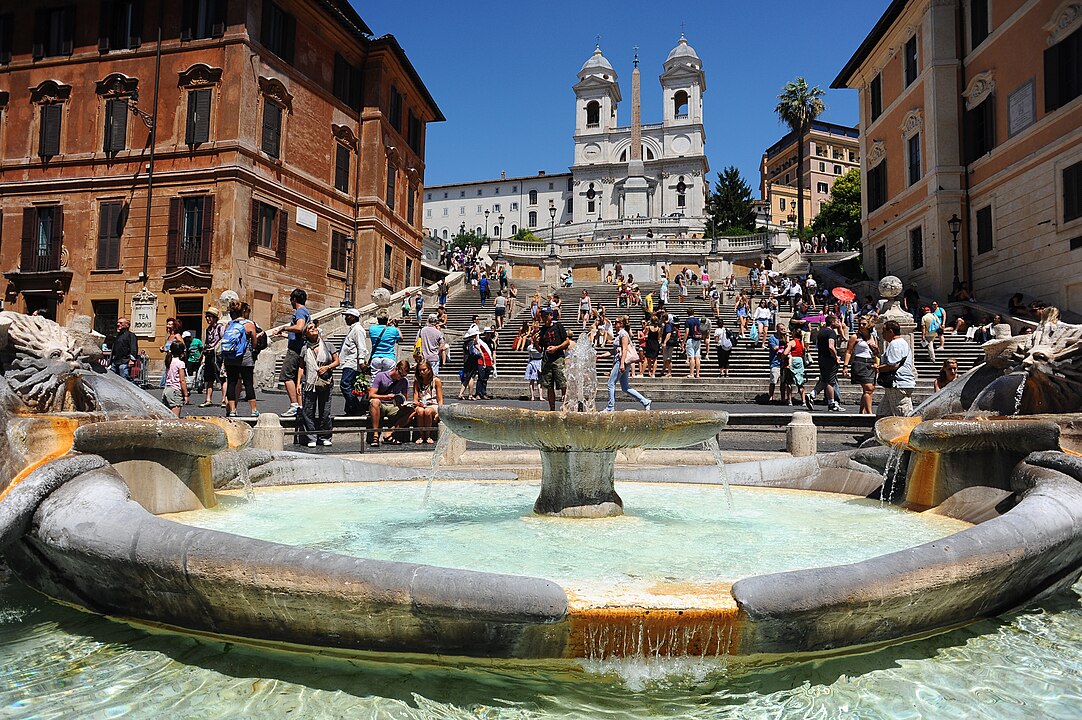
One of the city's most recognizable attractions, with as many as 135 steps. The Spanish Steps connect the Spanish Square with the church Trinità dei Monti, creating a picturesque perspective known from postcards and movies. It is a meeting place for locals and tourists, especially beautiful in spring, when it is decorated with azalea flowers. The staircase has inspired painters, poets and photographers for centuries, becoming a symbol of romantic Rome.
During the visit:
🔹 climb to the very top and look at the panorama of Spanish Square,
🔹 Sit on the steps and feel the atmosphere of "dolce vita" meetings,
🔹 see church Trinità dei Monti At the top of the stairs,
🔹 come in the evening, when the place takes on a unique atmosphere.
📍 Access: metro line A - Spagna station, the stairs are right at the exit
🕐 Tour time: 20-30 minutes. It is best to come in the morning to avoid the crowds, or in the evening when they are beautifully lit.
6️⃣ Campo de' Fiori - a square full of life and meetings
Campo de' Fiori in Rome - a square that smells of execution and basil
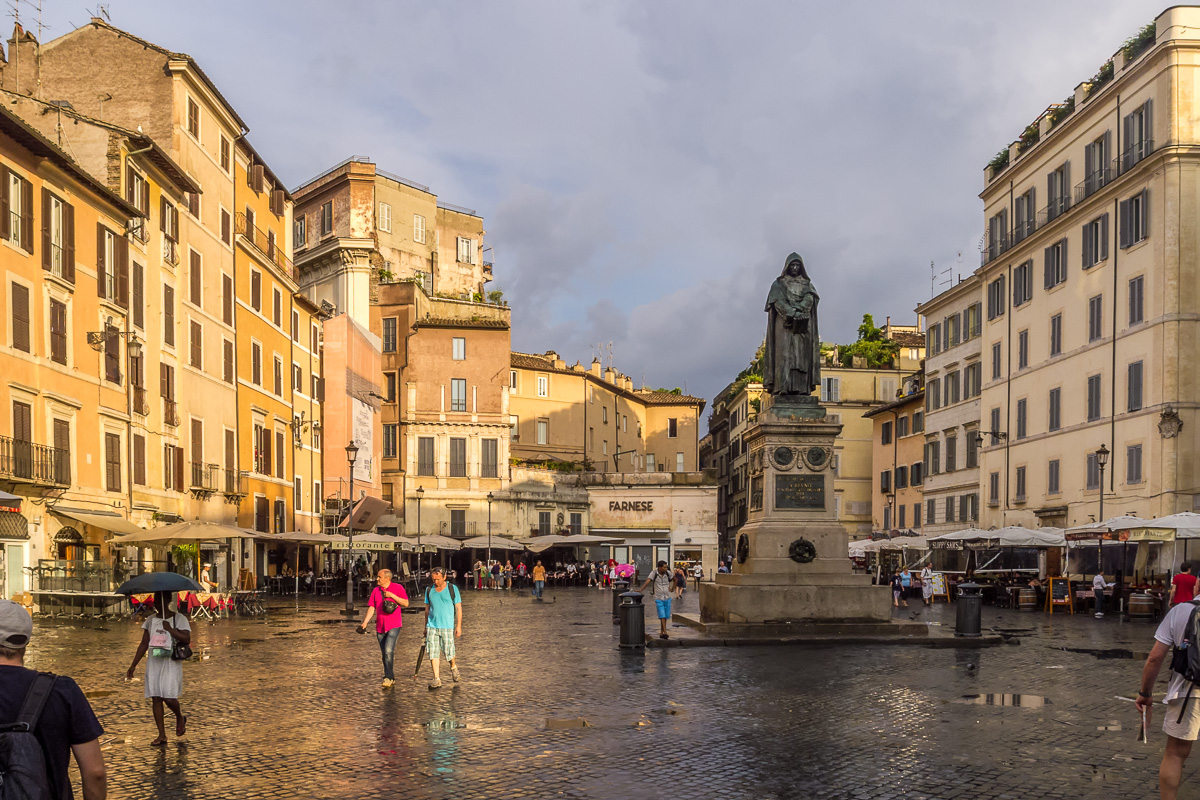
One of Rome's most distinctive squares, which bustles with commerce during the day and turns into a center of social life in the evenings. In the morning there is a colorful market full of fresh fruits, vegetables, flowers and Italian specialties, and in the evening the cafes and restaurants fill up with people. In the center of the square stands a statue of the philosopher Giordano Bruno, burned here in the 17th century - a reminder that this place also has a dark history. Campo de' Fiori is the perfect spot to end a day full of sightseeing.
During the visit:
🔹 Visit the morning market and see what daily life is like for Romans,
🔹 Take a look at the Giordano Bruno statue and learn about its history,
🔹 Sit down at one of the restaurants and try a classic pizza or pasta,
🔹 in the evening feel the atmosphere of meetings and Italian dolce vita.
📍 Access: walk from Piazza Navona (about 5 minutes) or take the buses that run through Corso Vittorio Emanuele II
🕐 Tour time: 30-60 minutes. It is best to come in the morning for market or in the evening for dinner.
🛎️ Practical tips
Traveling to Rome in two days requires good organization. Here are some tips to make the most of your time and enjoy every moment in the Eternal City:
🔹 Transport - Most attractions are close together, so it's best to explore on foot. You can comfortably reach the Vatican and Spanish Square by subway (line A). Public transportation tickets can be purchased at kiosks and vending machines.
🔹 Tickets - The Colosseum, Roman Forum, Palatine and Vatican Museums are worth booking online in advance to avoid long queues.
🔹 Accommodation - Choose a hotel or apartment in the center, such as near Termini, Piazza Navona or Trastevere - this will save you time on the commute.
🔹 Food - At lunchtime, try pizza al taglio (in pieces) or classic supplì (rice balls). For dinner, choose trattorias in Trastevere or on Campo de' Fiori.
🔹 Time - In Rome, the queues can be long, so it's best to start your day early in the morning and plan to visit the popular sites (Colosseum, Vatican City) first.
🔹 Security - In crowded places like the subway or around the Trevi Fountain, watch out for pickpockets.
🔹 Atmosphere - find a moment to sit in the piazza, sip an espresso and simply observe life - because it is in moments like these that you feel the true spirit of Rome.
Summary
Two days in Rome is an intense adventure, full of history, art and a unique atmosphere. In such a short time you can see the most important sites of the Eternal City - from the might of the ancient Colosseum and Roman Forum, to the Baroque charm of the Trevi Fountain and Piazza Navona, to the spiritual heart of the Vatican with St. Peter's Basilica and the Sistine Chapel.
Although the schedule is tight, every step in Rome is an encounter with history and beauty. It is also worth leaving a moment for a simple stroll, a cup of espresso in a small cafe or dinner in a bustling trattoria. Because it is in such moments that you can truly feel why Rome is called the Eternal City - And why everyone who comes here dreams of returning.

